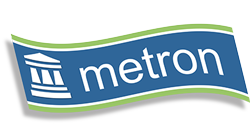I’ll continue the background on vSphere and Hyper-V by looking at some of the memory
management features available in each.
vSphere memory management
features
Transparent page sharing – a technique that
vSphere uses to make redundant copies of pages and basically eliminate those
pages.
Ballooning – which is in essence borrowing memory. You can
see from the diagram above that the balloon essentially inflates and takes
memory away from a virtual guest, making it available to another guest.
Memory
compression – allows pages to be swapped to a cache in memory, rather than
disk. When placed into the cache they are compressed, thus allowing pages
in memory to be freed up.
Paging
– If memory gets tight it will page out to disk and
make more memory available.
Hyper-V is quite a bit different in that you do not have as many memory
management features, the main feature that you have is dynamic memory.
Dynamic memory for enlightened
Windows VMs – it will dynamically allocate memory to the windows virtual machines
(not available for Linux) with hooks into the Operating System.
Next week I’ll share a list of what I consider
to be the key performance metrics that I'd advise you to look at for
capacity and performance management, the challenges in benchmarking
virtual environments and
explain my test environment and testing methods when comparing vSphere with Hyper-V.
Dale Feiste
Consultant















